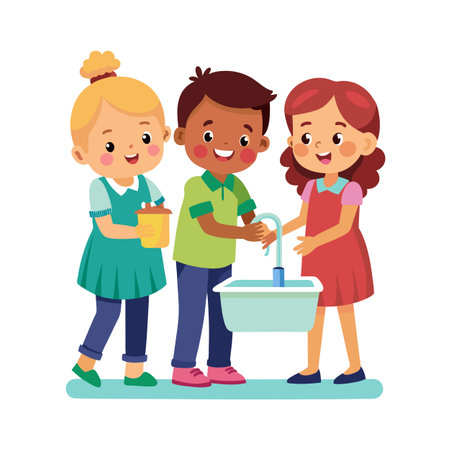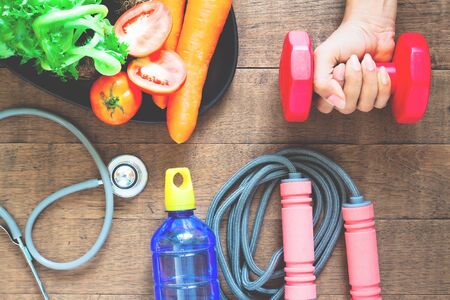Understanding Growing Bodies
As kids and teens navigate the journey from childhood to adulthood, their bodies and minds undergo remarkable changes. This period is marked by rapid physical growth—bones stretch, muscles strengthen, and hormones surge, all working together to shape a unique and ever-evolving individual. Alongside these physical shifts come emotional ups and downs that can sometimes feel overwhelming, from mood swings and self-discovery to growing social pressures at school and home.
Supporting the well-being of children and teenagers during these transformative years is essential. When young people feel balanced physically and emotionally, theyre more resilient, confident, and ready to embrace lifes challenges. This is why introducing holistic approaches like acupressure and reflexology can play a powerful role in nurturing their health. By understanding what kids and teens are experiencing as they grow, we set the stage for meaningful support that goes far beyond just getting through another day—we help them build a foundation for lifelong wellness.
2. What is Acupressure and Reflexology?
Acupressure and reflexology are two touch-based practices that have been used for centuries to support health and well-being. Both methods are gentle, natural ways to help kids and teens feel their best—no needles, just hands! Let’s break down what each practice is all about and how they can make a difference in growing bodies.
Understanding Acupressure
Acupressure comes from Traditional Chinese Medicine. It involves using gentle pressure with fingers, palms, or special tools on specific points of the body. These points are believed to connect to different organs and systems. By pressing on these spots, acupressure may help relieve tension, boost energy, and support overall health—making it great for active kids and busy teens.
What is Reflexology?
Reflexology is similar but focuses mostly on the feet, hands, and ears. The idea is that certain areas (called “reflex zones”) correspond to different parts of the body. For example, massaging a spot on the foot might help with a headache or calm an upset stomach. Reflexology is easy to try at home and can be relaxing before bed or after a long day at school.
How Do They Help Kids and Teens?
| Practice | Main Areas | Common Benefits for Kids & Teens |
|---|---|---|
| Acupressure | Whole body (head, arms, legs) | Reduces stress, eases muscle aches, supports focus |
| Reflexology | Feet, hands, ears | Improves sleep, calms anxiety, helps digestion |
Simple Language for Everyday Life
You don’t need special training to start exploring these techniques at home. With some basic guidance from a certified practitioner or reliable online resources, parents and caregivers can safely introduce acupressure and reflexology into their kids’ routines. Whether it’s a quick foot massage before soccer practice or gentle hand pressure during homework time, these touch-based practices offer simple ways to support healthy growth and emotional balance every day.

3. Common Benefits for Kids and Teens
Acupressure and reflexology aren’t just for adults—they offer a variety of real-life benefits that can make a difference in the everyday lives of kids and teens. As young people face unique challenges, from academic pressure to physical growth spurts, these gentle therapies can be surprisingly effective in helping them navigate growing up.
Stress Relief
School, extracurricular activities, and social life can sometimes feel overwhelming. Acupressure and reflexology help release built-up tension in the body, encouraging relaxation. Regular sessions may reduce feelings of anxiety and help kids and teens better manage their emotions during tough times.
Better Focus at School
Staying focused through long classes or homework assignments isn’t always easy. By stimulating specific points related to concentration and mental clarity, acupressure supports sharper focus and memory retention. This means more confidence in class participation and better test performance.
Improved Sleep
Quality sleep is crucial for growing bodies and minds, but many young people struggle with falling or staying asleep. Reflexology techniques—especially those centered around the feet—can calm the nervous system, making it easier for kids and teens to wind down at bedtime and enjoy deeper, more restorative sleep.
Help with Growing Pains
Aches in legs, arms, or backs are common during growth spurts. Acupressure offers natural pain relief by targeting areas linked to discomfort, reducing soreness without medication. For active kids or athletes, these therapies also support faster recovery after sports or play.
A Holistic Approach for Every Stage
By addressing both physical discomforts and emotional stressors, acupressure and reflexology empower kids and teens to feel stronger and more balanced as they grow. These simple techniques can be integrated into daily routines at home or used as part of an overall wellness plan, providing lasting benefits at every stage of development.
4. Safe and Practical Techniques for Home
Acupressure and reflexology can be both fun and relaxing for kids, teens, and their families. By learning a few simple techniques, parents and children can bond while supporting growing bodies with gentle touch. Here are safe, effective routines and points that families in the U.S. can easily incorporate into everyday life.
How to Get Started Safely
Before beginning, make sure everyone washes their hands and sits comfortably. Always use gentle pressure—think of pressing a soft peach rather than poking. If your child feels any pain or discomfort, stop immediately. These routines should never replace medical care but can complement healthy habits at home.
Recommended Acupressure & Reflexology Points
| Point Name | Location | How It Helps | How to Press |
|---|---|---|---|
| Yintang (Calm Mind) | Between eyebrows | Reduces stress, improves focus | Lightly press in circles for 30 seconds |
| LI4 (Hegu) | Web between thumb and index finger | Eases headaches, supports immunity | Squeeze gently for 20-30 seconds on each hand |
| Foot Reflex: Solar Plexus Point | Center of foot just below ball of foot | Promotes relaxation, relieves tension | Use thumb to press gently for 10-15 seconds on each foot |
| Knee Reflex Point | Beneath kneecap on outer edge of shinbone | Aids digestion and growth support | Massage in small circles for 30 seconds per side |
Sample Home Routine for Families
- Create a Calm Space: Dim the lights, play soft music if you like.
- Breathe Together: Take three slow, deep breaths as a family to relax.
- Select Two Points: Try Yintang and Foot Solar Plexus first for calming energy.
- Take Turns: Let everyone have a chance to both give and receive acupressure.
- Share How You Feel: Afterward, talk about any changes in mood or comfort.
Cultural Tip:
This routine fits easily into American family life—try it before bedtime, after homework sessions, or during weekend wind-down time. Remember, the goal is connection and wellness—not perfection!
5. Guidance and Safety for Parents and Caregivers
Introducing acupressure and reflexology to kids and teens can be both exciting and a little nerve-wracking for parents and caregivers. It’s natural to want the best for your child’s well-being, so understanding when and how to try these techniques is key. Start by learning some basic, gentle acupressure points or simple reflexology moves that are age-appropriate. For younger children, keep sessions short—just a few minutes at a time. Make sure your child feels comfortable throughout; check in with them about pressure levels and any sensations they experience.
Before beginning any hands-on wellness practice, it’s a good idea to consult with your pediatrician—especially if your child has underlying health conditions or sensitivities. If you’re unsure about technique or have questions about what’s safe, reaching out to a licensed acupuncturist or certified reflexologist can offer peace of mind. Many professionals are happy to demonstrate techniques that you can safely use at home or point you toward reputable resources for further learning.
Always respect your child’s boundaries and preferences. Some children love touch while others may feel uneasy—either response is perfectly okay. Encourage open communication: ask how they’re feeling before, during, and after each session. Never force participation; instead, create an inviting atmosphere with soft music, cozy pillows, or their favorite stuffed animal nearby. Your support and patience help build trust, making these moments something your child can look forward to rather than shy away from.
Finally, remember that acupressure and reflexology aren’t meant to replace medical care but can be valuable additions to your family’s toolkit for stress relief and relaxation. If you notice any unusual reactions—such as pain, dizziness, or emotional distress—pause immediately and seek guidance from a healthcare professional. With thoughtful preparation and ongoing support, you’ll empower your child to explore new ways of feeling good in their growing body.
6. Making It Fun & Engaging for Young People
Introducing acupressure and reflexology to kids and teens works best when it feels like play rather than a chore. By weaving these wellness practices into daily routines, you can help young people see self-care as something enjoyable and natural. Try turning sessions into a family “Wellness Hour,” where everyone takes turns picking a favorite calming music playlist, or let kids choose fun names for each pressure point—like “Happy Toes” or “Focus Fingers.” Encourage younger children to use their imagination by pretending they’re superheroes charging up their energy with each gentle press. For teens, connect the benefits of acupressure and reflexology to their interests, such as better sleep before a big game or stress relief during finals week.
Playful Ways to Practice Together
Start simple: create a “Feel Good Chart” with stickers or markers for each time your child tries a new technique. Use story time to practice foot or hand reflexology—read aloud while gently massaging specific points, turning bedtime into a soothing ritual. Host mini “Spa Days” at home, where siblings or friends can pair up and follow easy guides together, learning about body awareness in a relaxed setting.
Building Habits & Bonding Moments
Let kids take the lead by teaching you what they’ve learned or encouraging them to invent their own short acupressure routines. Celebrate small wins—maybe it’s feeling more focused after school or falling asleep faster at night. Over time, these playful moments become cherished habits that support physical health and deepen family connections, making wellness an everyday adventure rather than just another item on the to-do list.

